Could You Theoretically Time Travel Through A Black Hole Or Other Object With Such Intense Mass?
Could you theoretically time travel through a black hole or other object with such intense mass?
More Posts from Nasa and Others
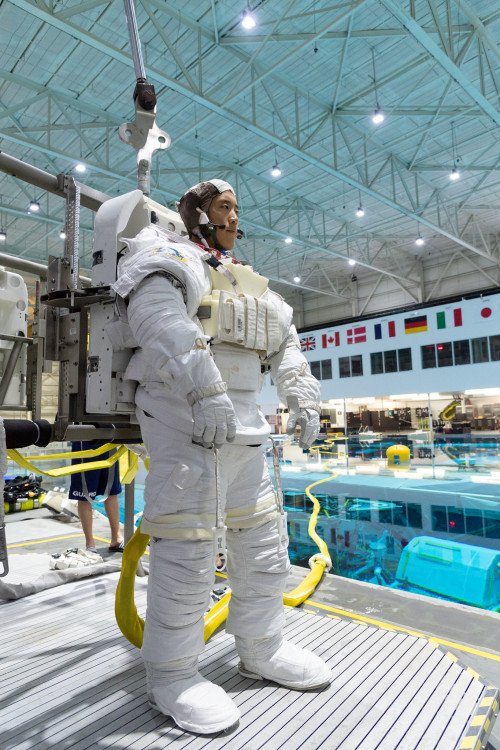
NASA Spotlight: Astronaut Jonny Kim
Dr. Jonny Kim was selected by NASA to join the 2017 Astronaut Candidate Class. He reported for duty in August 2017 and having completed the initial astronaut candidate training is now eligible for mission assignments to the International Space Station, the Moon and eventually Mars. A U.S. Navy SEAL, Kim completed more than 100 combat operations. Kim was commissioned as a naval officer through an enlisted-to-officer program and earned his degree in mathematics at the University of San Diego and a doctorate of medicine at Harvard Medical School. Born and raised in Los Angeles, California to Korean-American immigrants, he enjoys spending time with his family, outdoor activities, academic and professional mentoring, strength training and lifelong learning.
Dr. Kim took some time from his job as a NASA astronaut to answer questions about his life and career! Enjoy:
Why did you apply to be an astronaut?
For many reasons. I think that humans are natural explorers. There is a calling in all of us to explore the unknown, push the boundaries and redefine what is possible. I’m drawn to the physical and mental challenges of space exploration and the teamwork required to complete such an objective. And finally, the opportunity to do something good for our country, for humanity, and to inspire the next generation of thinkers, leaders, explorers and scientists.
What was your favorite memory from astronaut training?

I’m a big believer that people can grow stronger bonds with each other when they succeed through shared hardship. And I think that developing relationships with one another is one of the best ways to forge successful team skills to be successful in any endeavor. With that context, I can tell you that my favorite memory from astronaut training was traversing the deep canyon slots of the Utah Canyon Lands for almost 2 weeks with my classmates. We hiked trails, climbed canyons, swam through deep, dark, cold and murky waters and forged through uncertainty, all while being together. This shared hardship was not only fun, but it helped us grow closer to one another. It’s one of the fondest memories I have when I think about my amazing classmates, and through that shared hardship, I know I can count on any one of my fellow astronauts when the going gets tough.
If you could play any song during launch, what would it be?
Don’t Stop Believin’ by Journey.
What advice would you give to your younger self?
I would tell myself to always follow your passion, never stature or money, because following a life of passion is long-term, sustainable and usually helps others. Be accountable for your mistakes and failures, and maintain the humility to learn from those mistakes and failures. And finally, I would caution myself that all worthwhile goals are difficult to obtain, but with the right attitude and hard work, you can accomplish anything.
How did your time as a Navy Seal impact your astronaut training?

Being a Naval Special Warfare Operator taught me that humans are capable of accomplishing ten times what their bodies and mind tell them. I learned there are no limits in life, and the biggest setback one can have is a poor attitude. I learned the value of strong leadership and accountability. I also learned the meaning of sacrifice, hardship, teamwork, love and compassion. All these traits helped me to develop the hard and soft skills required to be an astronaut.
How do we prepare medically for long duration missions? What tools, resources, medications do we anticipate needing, and how do we figure that out?
This is a great question and the answer is evolving. The way we answer this question is by being thoughtful and consulting the medical communities to weigh the pros and cons of every single decision we make regarding this. Mass plays an important factor, so we have to be mindful of everything we bring and how we train for it.
Who was the first person you called after being selected to be an astronaut?

It would have been my wife but she was with me when I heard the news. The first person I called was my mom.
What is one item from home that you would bring to space?
A picture of my wife and kids.
What does it mean to you to be part of the Artemis generation of astronauts?

It means that I have a duty and obligation to serve humanity’s best interests. To explore the unknown, push boundaries and redefine what’s possible. It means I have an immense opportunity to serve as an example and inspiration to our next generation of leaders and explorers. It also means there is a hard road ahead, and when the mission calls for us, we will be ready.
What are three personal items, besides photos of family and friends, that you would bring with you on your first spaceflight?
An automatic watch, because the engineering behind a timepiece is a beautiful thing. An American flag, because I proudly believe and uphold the principles and ideals our country stands for. And finally, a nice journal that I can put handwritten thoughts on.
Thank you for your time, and good luck on your first spaceflight assignment!
Follow Jonny Kim on Twitter and Instagram to keep up with his life as NASA astronaut.
It’s not too late to APPLY to #BeAnAstronaut! Applications close TOMORROW, March 31.
Make sure to follow us on Tumblr for your regular dose of space: http://nasa.tumblr.com.
Fun Facts About Mars

Mars is a cold desert world, and is the fourth planet from the sun. It is half the diameter of Earth and has the same amount of dry land. Like Earth, Mars has seasons, polar ice caps, volcanoes, canyons and weather, but its atmosphere is too thin for liquid water to exist for long on the surface. There are signs of ancient floods on the Red Planet, but evidence for water now exists mainly in icy soil and thin clouds.

Earth has one, Mars has two…moons of course! Phobos (fear) and Deimos (panic) are the Red Planet’s two small moons. They are named after the horses that pulled the chariot of the Greek war god Ares, the counterpart to the Roman war god Mars.

The diameter of Mars is 4220 miles (6792 km). That means that the Red Planet is twice as big as the moon, but the Earth is twice as big as Mars.

Since Mars has less gravity than Earth, you would weigh 62% less than you do here on our home planet. Weigh yourself here on the Planets App. What’s the heaviest thing you’ve ever lifted? On Mars, you could have lifted more than twice that! Every 10 pounds on Earth only equals 4 pounds on the Red Planet. Find out why HERE.

Mass is the measurement of the amount of matter something contains. Mars is about 1/10th of the mass of Earth.

Mars and Earth are at their closest point to each other about every two years, with a distance of about 33 million miles between them at that time. The farthest that the Earth and Mars can be apart is: 249 million miles. This is due to the fact that both Mars and Earth have elliptical orbits and Mars’ orbit is tilted in comparison with the Earth’s. They also orbit the sun at different rates.

The temperature on Mars can be as high as 70 degrees Fahrenheit (20 degrees Celsius) or as low as about –225 degrees Fahrenheit (-153 degrees Celsius). How hot or cold the surface varies between day and night and among seasons. Mars is colder than Earth because it is farther from the sun.

You know that onions have layers, but did you know that Mars has layers too? Like Earth, Mars has a crust, a mantle and a core. The same stuff even makes up the planet layers: iron and silicate.

Ever wonder why it’s so hard launching things to space? It’s because the Earth has a log of gravity! Gravity makes things have weight, and the greater the gravity, the more it weights. On Mars, things weigh less because the gravity isn’t as strong.

Take a deep breath. What do you think you just breathed in? Mostly Nitrogen, about a fifth of that breath was Oxygen and the rest was a mix of other gases. To get the same amount of oxygen from one Earth breath, you’d have to take around 14,500 breaths on Mars! With the atmosphere being 100 times less dense, and being mostly carbon dioxide, there’s not a whole lot of oxygen to breathe in.

Mars has about 15% of Earth’s volume. To fill Earth’s volume, it would take over 6 Mars’ volumes.
For more fun Mars facts, visit HERE.
Make sure to follow us on Tumblr for your regular dose of space: http://nasa.tumblr.com
Human Research, Robotic Refueling, Crystallography and More Headed to Orbiting Lab
New science is headed to the International Space Station aboard the SpaceX Dragon.
Investigations on this flight include a test of robotic technology for refueling spacecraft, a project to map the world’s forests and two student studies inspired by Marvel’s “Guardians of the Galaxy” series.
Learn more about the science heading into low-Earth orbit:
The forest is strong with this one: GEDI studies Earth’s forests in 3D
The Global Ecosystem Dynamics Investigation (GEDI) is an instrument to measure and map Earth’s tropical and temperate forests in 3D.

The Jedi knights may help protect a galaxy far, far away, but our GEDI will help us study and understand forest changes right here on Earth.
Robotic refueling in space
What’s cooler than cool? Cryogenic propellants, or ice-cold spacecraft fuel! Our Robotic Refueling Mission 3 (RRM3) will demonstrate technologies for storing and transferring these special liquids. By establishing ways to replenish this fuel supply in space, RRM3 could help spacecraft live longer and journey farther.

The mission’s techniques could even be applied to potential lunar gas stations at the Moon, or refueling rockets departing from Mars.
Staying strong in space
The Molecular Muscle investigation examines the molecular causes of muscle abnormalities from spaceflight in C. elgans, a roundworm and model organism.
This study could give researchers a better understanding of why muscles deteriorate in microgravity so they can improve methods to help crew members maintain their strength in space.

Investigation studies space-grown crystals for protection against radiation
Perfect Crystals is a study to learn more about an antioxidant protein called manganese superoxide dismutase that protects the body from the effects of radiation and some harmful chemicals.
The station’s microgravity environment allows researchers to grow more perfectly ordered crystals of the proteins. These crystals are brought back to Earth and studied in detail to learn more about how the manganese superoxide dismutase works. Understanding how this protein functions may aid researchers in developing techniques to reduce the threat of radiation exposure to astronauts as well as prevent and treat some kinds of cancers on Earth.
Satellite deployment reaching new heights with SlingShot
SlingShot is a new, cost-effective commercial satellite deployment system that will be tested for the first time.

SlingShot hardware, two small CubeSats, and a hosted payload will be carried to the station inside SpaceX’s Dragon capsule and installed on a Cygnus spacecraft already docked to the orbiting laboratory. Later, Cygnus will depart station and fly to a pre-determined altitude to release the satellites and interact with the hosted payload.
Investigation studies accelerated aging in microgravity
Spaceflight appears to accelerate aging in both humans and mice. Rodent Research-8 (RR-8) is a study to understand the physiology of aging and the role it plays on the progression of disease in humans. This investigation could provide a better understanding of how aging changes the body, which may lead to new therapies for related conditions experienced by astronauts in space and people on Earth.
Guardians of the space station: Student contest flies to orbiting lab
The MARVEL ‘Guardians of the Galaxy’ Space Station Challenge is a joint project between the U.S. National Laboratory and Marvel Entertainment featuring two winning experiments from a contest for American teenage students. For the contest, students were asked to submit microgravity experiment concepts that related to the Rocket and Groot characters from Marvel’s “Guardians of the Galaxy” comic book series.

Team Rocket: Staying Healthy in Space
If an astronaut suffers a broken tooth or lost filling in space, they need a reliable and easy way to fix it. This experiment investigates how well a dental glue activated by ultraviolet light would work in microgravity. Researchers will evaluate the use of the glue by treating simulated broken teeth and testing them aboard the station.
Team Groot: Aeroponic Farming in Microgravity
This experiment explores an alternative method for watering plants in the absence of gravity using a misting device to deliver water to the plant roots and an air pump to blow excess water away. Results from this experiment may enable humans to grow fruits and vegetables in microgravity, and eliminate a major obstacle for long-term spaceflight.
These investigation join hundreds of others currently happening aboard the station. For more info, follow @ISS_Research!
Make sure to follow us on Tumblr for your regular dose of space: http://nasa.tumblr.com
Pi Guides the Way
It may be irrational but pi plays an important role in the everyday work of scientists at NASA.

What Is Pi ?
Pi is the ratio of a circle’s circumference to its diameter. It is also an irrational number, meaning its decimal representation never ends and it never repeats. Pi has been calculated to more than one trillion digits,
Why March 14?
March 14 marks the yearly celebration of the mathematical constant pi. More than just a number for mathematicians, pi has all sorts of applications in the real world, including on our missions. And as a holiday that encourages more than a little creativity – whether it’s making pi-themed pies or reciting from memory as many of the never-ending decimals of pi as possible (the record is 70,030 digits).

While 3.14 is often a precise enough approximation, hence the celebration occurring on March 14, or 3/14 (when written in standard U.S. month/day format), the first known celebration occurred in 1988, and in 2009, the U.S. House of Representatives passed a resolution designating March 14 as Pi Day and encouraging teachers and students to celebrate the day with activities that teach students about pi.
5 Ways We Use Pi at NASA
Below are some ways scientists and engineers used pi.

Keeping Spacecraft Chugging Along
Propulsion engineers use pi to determine the volume and surface area of propellant tanks. It’s how they size tanks and determine liquid propellant volume to keep spacecraft going and making new discoveries.

Getting New Perspectives on Saturn
A technique called pi transfer uses the gravity of Titan’s moon, Titan, to alter the orbit of the Cassini spacecraft so it can obtain different perspectives of the ringed planet.

Learning the Composition of Asteroids
Using pi and the asteroid’s mass, scientists can calculate the density of an asteroid and learn what it’s made of--ice, iron, rock, etc.

Measuring Craters
knowing the circumference, diameter and surface area of a crater can tell scientists a lot about the asteroid or meteor that may have carved it out.

Determining the Size of Exoplanets
Exoplanets are planets that orbit suns other than our own and scientists use pi to search for them. The first step is determining how much the light curve of a planet’s sun dims when a suspected planets passes in front of it.
Want to learn more about Pi? Visit us on Pinterest at: https://www.pinterest.com/nasa/pi-day/
Make sure to follow us on Tumblr for your regular dose of space: http://nasa.tumblr.com
How do blackholes form and how do they move ?
Solar System: Things to Know This Week
Learn the latest on Cassini’s Grand Finale, Pluto, Hubble Space Telescope and the Red Planet.
1. Cassini’s Grand Finale

After more than 12 years at Saturn, our Cassini mission has entered the final year of its epic voyage to the giant planet and its family of moons. But the journey isn't over. The upcoming months will be like a whole new mission, with lots of new science and a truly thrilling ride in the unexplored space near the rings. Later this year, the spacecraft will fly repeatedly just outside the rings, capturing the closest views ever. Then, it will actually orbit inside the gap between the rings and the planet's cloud tops.
Get details on Cassini’s final mission
The von Kármán Lecture Series: 2016
2. Chandra X-Rays Pluto

As the New Horizon’s mission headed to Pluto, our Chandra X-Ray Observatory made the first detection of the planet in X-rays. Chandra’s observations offer new insight into the space environment surrounding the largest and best-known object in the solar system’s outermost regions.
See Pluto’s X-Ray
3. ... And Then Pluto Painted the Town Red

When the cameras on our approaching New Horizons spacecraft first spotted the large reddish polar region on Pluto's largest moon, Charon, mission scientists knew two things: they'd never seen anything like it before, and they couldn't wait to get the story behind it. After analyzing the images and other data that New Horizons has sent back from its July 2015 flight through the Pluto system, scientists think they've solved the mystery. Charon's polar coloring comes from Pluto itself—as methane gas that escapes from Pluto's atmosphere and becomes trapped by the moon's gravity and freezes to the cold, icy surface at Charon's pole.
Get the details
4. Pretty as a Postcard

The famed red-rock deserts of the American Southwest and recent images of Mars bear a striking similarity. New color images returned by our Curiosity Mars rover reveal the layered geologic past of the Red Planet in stunning detail.
More images
5. Things Fall Apart

Our Hubble Space Telescope recently observed a comet breaking apart. In a series of images taken over a three-day span in January 2016, Hubble captured images of 25 building-size blocks made of a mixture of ice and dust drifting away from the comet. The resulting debris is now scattered along a 3,000-mile-long trail, larger than the width of the continental U.S.
Learn more
Discover the full list of 10 things to know about our solar system this week HERE.
Make sure to follow us on Tumblr for your regular dose of space: http://nasa.tumblr.com
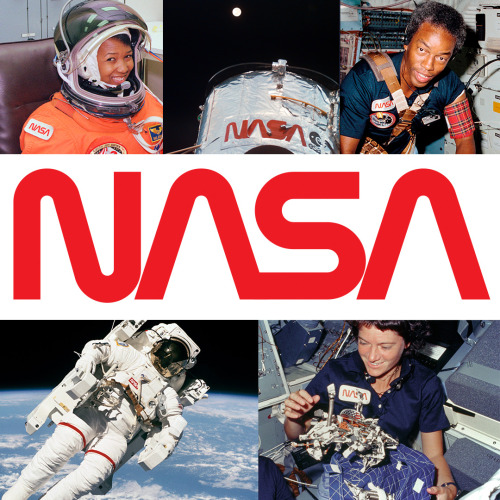
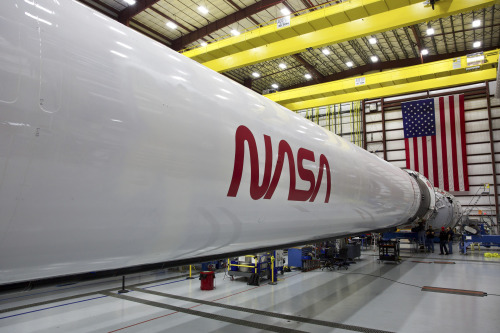
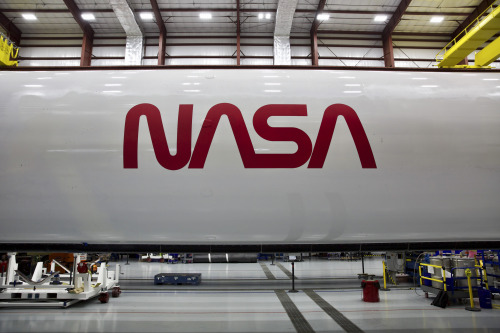
Retro. Modern. Iconic. That’s the worm.
#TheWormIsBack
Our beloved symbol of exploration will fly once again, just in time to mark the return of human spaceflight on American rockets from American soil. The retired logo is making its comeback on on SpaceX’s Falcon 9 rocket that will take flight later this year when we #LaunchAmerica once again.
The NASA insignia, or "meatball," seen in our profile image, was quite difficult to reproduce with 1970s technology. In 1975, enter the sleek, simple design you see above! The world knew it as “the worm.” For a period of time we were able to thrive with both the worm and the meatball. However, in 1992, the 1970s brand was retired - except on clothing and other souvenir items - in favor of the original late 1950s graphic.
Image Credit: NASA/SpaceX
Make sure to follow us on Tumblr for your regular dose of space: http://nasa.tumblr.com.
How Airglow Can Help Us Understand the Sun’s Influence on Earth
You may have seen the famous blue marble or pale blue dot images showing Earth from 18,000 and 3.7 billion miles away, respectively. But closer to home — some 300 miles above Earth's surface — you might encounter an unfamiliar sight: vibrant swaths of red and green or purple and yellow light emanating from the upper atmosphere.
This light is airglow.

Airglow is created when atoms and molecules in the upper atmosphere, excited by sunlight, emit light to shed excess energy. Or, it can happen when atoms and molecules that have been ionized by sunlight collide with and capture a free electron. In both cases, these atmospheric particles emit light in order to relax again. The process is similar to how auroras are created, but while auroras are driven by high-energy solar wind, airglow is energized by day-to-day solar radiation.

Since sunlight is constant, airglow constantly shines throughout Earth’s atmosphere, and the result is a tenuous bubble of light that closely encases our planet. Its light is too dim to see easily except in orbit or on the ground with clear, dark skies and a sensitive camera — it’s one-tenth as bright as the light given off by all the stars in the night sky.

Airglow highlights a key part of our atmosphere: the ionosphere. Stretching from roughly 50 to 400 miles above Earth’s surface, the ionosphere is an electrified layer of the upper atmosphere generated by extreme ultraviolet radiation from the Sun. It reacts to both terrestrial weather below and solar energy streaming in from above, forming a complex space weather system. Turbulence in this ever-changing sea of charged particles can manifest as disruptions that interfere with Earth-orbiting satellites or communication and navigation signals.

Understanding the ionosphere’s extreme variability is tricky because it requires untangling interactions between the different factors at play — interactions of which we don’t have a clear picture. That’s where airglow comes in. Each atmospheric gas has its own favored airglow color, hangs out at a different height and creates airglow by a different process, so we can use airglow to study different layers of the atmosphere.

Airglow carries information on the upper atmosphere’s temperature, density, and composition, but it also helps us trace how particles move through the region itself. Vast, high-altitude winds sweep through the ionosphere, pushing its contents around the globe — and airglow’s subtle dance follows their lead, highlighting global patterns.

Two NASA missions take advantage of precisely this effect to study the upper atmosphere: ICON — short for Ionospheric Connection Explorer — and GOLD — Global-scale Observations of the Limb and Disk.
ICON focuses on how charged and neutral gases in the upper atmosphere behave and interact, while GOLD observes what drives change — the Sun, Earth’s magnetic field or the lower atmosphere — in the region.

By imaging airglow, the two missions will enable scientists to tease out how space and Earth’s weather intersect, dictating the region’s complex behavior.
Keep up with the latest in NASA's airglow and upper atmosphere research on Twitter and Facebook or at nasa.gov/sunearth.
Make sure to follow us on Tumblr for your regular dose of space: http://nasa.tumblr.com.
Solar System: Top 5 Things to Know This Week
It’s only Tuesday and this week is already filled with news about our solar system. Here are the top five things to know this week:
1) Mars!

With five spacecraft in orbit and two rovers exploring the ground, there’s always something new and interesting about the Red Planet. Yesterday things got even more exciting when we released the most compelling evidence yet that liquid water sometimes flows on Mars today.
2) HTV-5 Cargo Ship

On Monday, the HTV-5 cargo ship was released from the International Space Station to burn up as it reenters Earth’s atmosphere. The HTV-5 carried a variety of experiments and supplies to the space station, and was docked for five weeks.
3) Pluto Continues to Excite

If you haven’t been keeping up with the weekly releases of newly downloaded pictures from our New Horizons spacecraft, you are definitely missing out. But don’t worry, we have you covered. The latest updates can be found HERE, be sure to follow along as new information is released. More images are scheduled to be featured on Oct. 1.
4) Cassini Mission

This week on Sept. 30, our Cassini spacecraft will reach the closest point to Saturn in it’s latest orbit around the planet. Just to put things in perspective, that will be Cassini’s 222nd orbit around Saturn! Learn more about this mission HERE.
5) What Happened to Mars’ Atmosphere?

Believe it or not, the Martian atmosphere we see today used to be much more substantial many years ago. What happened? Our Mars Atmosphere and Volatile EvolutioN (MAVEN) spacecraft has been in orbit around Mars for one Earth year, searching for the answers. Learn more HERE.
Make sure to follow us on Tumblr for your regular dose of space:http://nasa.tumblr.com
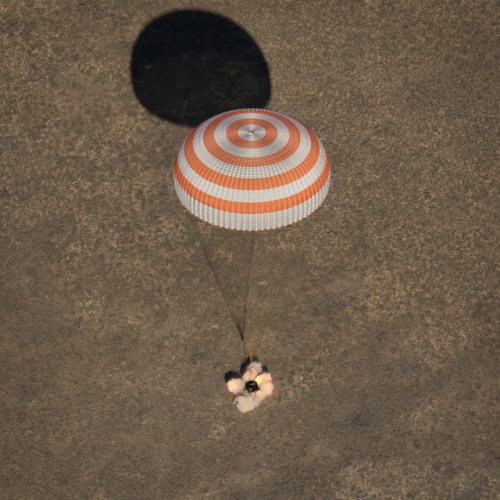
Touchdown!
A Soyuz spacecraft is seen as it lands with astronaut Shane Kimbrough of NASA and Russian Flight Engineers Sergey Ryzhikov and Andrey Borisenko near the town of Zhezkazgan, Kazakhstan on Monday, April 10. Kimbrough, Ryzhikov, and Borisenko are returning after 173 days in space onboard the International Space Station.
While living and working aboard the space station, the crew members contributed to hundreds of experiments in biology, biotechnology, physical science and Earth science aboard the world-class orbiting laboratory. For example, the Microgravity Expanded Stem Cells investigation had crew members observe cell growth and other characteristics in microgravity.
Results from this investigation could lead to the treatment of diseases and injury in space, and provide a way to improve stem cell production for medical therapies on Earth. Photo Credit: (NASA/Bill Ingalls)
Make sure to follow us on Tumblr for your regular dose of space: http://nasa.tumblr.com
-
 watch reblogged this · 1 year ago
watch reblogged this · 1 year ago -
 error-i-dunno-what-went-wrong reblogged this · 5 years ago
error-i-dunno-what-went-wrong reblogged this · 5 years ago -
 candyradium reblogged this · 5 years ago
candyradium reblogged this · 5 years ago -
 unknown-uwoit liked this · 5 years ago
unknown-uwoit liked this · 5 years ago -
 candyradium liked this · 5 years ago
candyradium liked this · 5 years ago -
 space-themed-bi reblogged this · 5 years ago
space-themed-bi reblogged this · 5 years ago -
 palominojacoby liked this · 5 years ago
palominojacoby liked this · 5 years ago -
 icantputmyfingeronit reblogged this · 5 years ago
icantputmyfingeronit reblogged this · 5 years ago -
 adt-space reblogged this · 5 years ago
adt-space reblogged this · 5 years ago -
 theinevitablestorm reblogged this · 5 years ago
theinevitablestorm reblogged this · 5 years ago -
 annewrighthglc liked this · 5 years ago
annewrighthglc liked this · 5 years ago -
 justatiredhuman liked this · 5 years ago
justatiredhuman liked this · 5 years ago -
 zelink-nalu liked this · 5 years ago
zelink-nalu liked this · 5 years ago -
 paul2486 liked this · 5 years ago
paul2486 liked this · 5 years ago -
 mentalbreakdownoccurring liked this · 5 years ago
mentalbreakdownoccurring liked this · 5 years ago -
 bluegoodolls liked this · 5 years ago
bluegoodolls liked this · 5 years ago -
 detectivehole reblogged this · 5 years ago
detectivehole reblogged this · 5 years ago -
 maggietann reblogged this · 5 years ago
maggietann reblogged this · 5 years ago -
 maggietann liked this · 5 years ago
maggietann liked this · 5 years ago -
 smol-bean-dragon-hoard liked this · 5 years ago
smol-bean-dragon-hoard liked this · 5 years ago -
 delicatemusictale liked this · 5 years ago
delicatemusictale liked this · 5 years ago -
 whitecatnatalie liked this · 5 years ago
whitecatnatalie liked this · 5 years ago -
 monkey-odysseus77 liked this · 5 years ago
monkey-odysseus77 liked this · 5 years ago -
 constructivemayhem liked this · 5 years ago
constructivemayhem liked this · 5 years ago -
 remembertheham liked this · 5 years ago
remembertheham liked this · 5 years ago -
 moraine-moraine liked this · 5 years ago
moraine-moraine liked this · 5 years ago -
 feryzapata liked this · 5 years ago
feryzapata liked this · 5 years ago -
 elizabethbrzozowska liked this · 5 years ago
elizabethbrzozowska liked this · 5 years ago -
 tearsofafallenangel reblogged this · 5 years ago
tearsofafallenangel reblogged this · 5 years ago -
 willowchild liked this · 5 years ago
willowchild liked this · 5 years ago -
 as-knight-and-day liked this · 5 years ago
as-knight-and-day liked this · 5 years ago -
 emulux liked this · 5 years ago
emulux liked this · 5 years ago -
 nova-rose-greene liked this · 5 years ago
nova-rose-greene liked this · 5 years ago -
 dogs-do-be-sus reblogged this · 5 years ago
dogs-do-be-sus reblogged this · 5 years ago -
 dogs-do-be-sus liked this · 5 years ago
dogs-do-be-sus liked this · 5 years ago -
 n-g-o liked this · 5 years ago
n-g-o liked this · 5 years ago -
 elegiacprince liked this · 5 years ago
elegiacprince liked this · 5 years ago -
 gebranntgebrannt liked this · 5 years ago
gebranntgebrannt liked this · 5 years ago -
 unpanoplied reblogged this · 5 years ago
unpanoplied reblogged this · 5 years ago -
 fistfulofgammarays liked this · 5 years ago
fistfulofgammarays liked this · 5 years ago -
 nasatranscription reblogged this · 5 years ago
nasatranscription reblogged this · 5 years ago -
 alexzenker liked this · 5 years ago
alexzenker liked this · 5 years ago -
 jiffypopboi liked this · 5 years ago
jiffypopboi liked this · 5 years ago -
 malecus liked this · 5 years ago
malecus liked this · 5 years ago
Explore the universe and discover our home planet with the official NASA Tumblr account
1K posts